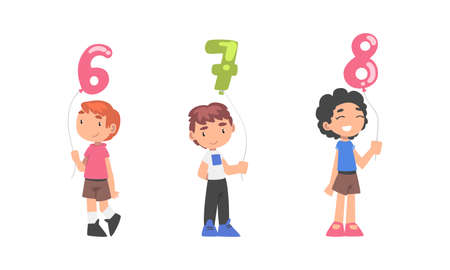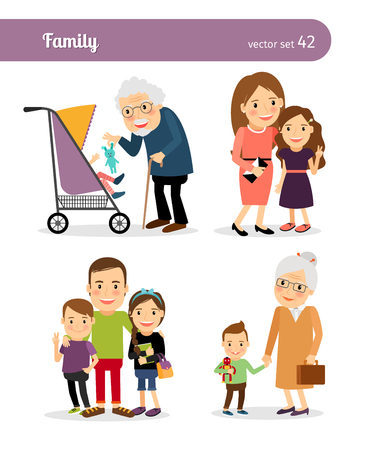Introduction to Family-Centered Care in Pediatric Rehabilitation
Family-centered care (FCC) is a leading approach in pediatric rehabilitation, especially for children with cerebral palsy (CP) in the United States. This model recognizes that families are the most important partners in a child’s care. Instead of only focusing on the child, FCC includes parents and caregivers as active members of the rehab team. This approach helps ensure that therapy goals and treatments fit with family values, daily routines, and cultural preferences.
What is Family-Centered Care?
Family-centered care means that healthcare professionals work closely with families when making decisions about their child’s treatment. For children with cerebral palsy, this can make a big difference because CP affects many parts of life—movement, communication, play, and even how a child participates at school or at home. Families know their child best, so including them leads to better outcomes and satisfaction.
Why is Family-Centered Care Important in Pediatric Rehabilitation?
Research and clinical experience show that FCC offers several benefits for children with CP and their families:
| Benefits for Children | Benefits for Families |
|---|---|
| Improved motivation during therapy | Greater confidence in caregiving |
| Better functional outcomes | Reduced stress levels |
| Personalized goals that matter most to the child | Enhanced understanding of therapy process |
| Increased participation in daily life activities | Stronger relationships with healthcare providers |
Alignment with Best Practices in the United States
The FCC model aligns closely with best practices recommended by top organizations such as the American Academy of Pediatrics (AAP) and the American Physical Therapy Association (APTA). In the U.S., therapists are encouraged to:
- Communicate openly and respectfully with families
- Share information clearly and honestly
- Invite families to set goals and make decisions together
- Respect cultural backgrounds and individual family needs
- Create flexible care plans that adapt to family routines
The Family’s Role in Rehabilitation Teams
In American pediatric rehab settings, families are often included in meetings, goal-setting sessions, and therapy planning. They are encouraged to share observations about what works at home or in community settings. Healthcare teams listen carefully to these insights, which leads to more practical solutions for challenges faced by children with CP.
A Culturally Responsive Approach
Cultural sensitivity is an essential part of FCC in the U.S. Providers learn about each family’s unique traditions and perspectives. They use this information to support family strengths and respect differences—making sure every child receives care that fits their background and lifestyle.
2. Core Principles of Family-Centered Care Models
Collaboration Between Families and Professionals
In pediatric rehabilitation for children with cerebral palsy, collaboration is at the heart of family-centered care. This means therapists, doctors, and other professionals work closely with families as partners. Everyone brings their own expertise to the table—families know their child best, while professionals provide clinical knowledge and experience. By working together, they create a plan that supports both the child’s development and the family’s goals.
Respect for Family Values and Preferences
Every family is unique, with its own culture, beliefs, and routines. A core principle of family-centered care is respecting these differences. Healthcare teams take time to learn about what matters most to each family—whether it’s daily routines, cultural traditions, or specific hopes for their child’s future. This respect helps build trust and ensures that care plans are meaningful and practical for each individual situation.
Shared Decision-Making
Shared decision-making means families are not just informed about their child’s care—they are actively involved in making decisions. Professionals share information in clear, easy-to-understand language so families can weigh options together. This approach empowers parents to ask questions and express concerns, making sure everyone feels confident about the chosen interventions.
Examples of Shared Decision-Making in Practice
| Situation | Familys Role | Professionals Role |
|---|---|---|
| Selecting therapy goals | Share priorities and everyday challenges | Suggest evidence-based strategies |
| Choosing assistive devices | Express preferences about appearance or use at home/school | Explain benefits and fit devices to childs needs |
| Setting schedules for therapy sessions | Discuss family routines and availability | Adjust times to reduce stress on family life |
Individualized Intervention Strategies
No two children with cerebral palsy are alike, so intervention strategies must be tailored to each child and family. Therapists assess strengths, needs, and family circumstances before creating customized plans. These plans might include physical therapy exercises that fit into playtime at home or communication tools that match a child’s abilities and interests. Individualization makes care more effective—and more meaningful—for everyone involved.
Main Takeaways from Core Principles Table
| Principle | Description |
|---|---|
| Collaboration | Families and professionals work together as partners. |
| Respect for Values | Cultural beliefs and personal preferences guide care decisions. |
| Shared Decision-Making | Families have an equal say in planning interventions. |
| Individualization | Treatments are tailored to each childs unique needs. |
This focus on core principles helps ensure that pediatric rehabilitation for children with cerebral palsy is supportive, respectful, and truly centered around the family’s needs.

3. Application in Cerebral Palsy Rehabilitation
How Family-Centered Care Supports Children with Cerebral Palsy
Family-centered care (FCC) is a key approach in pediatric rehabilitation for children with cerebral palsy (CP) in the United States. This model recognizes that parents and caregivers play an essential role in their child’s development, daily care, and therapy outcomes. FCC encourages healthcare providers to work closely with families, respecting their knowledge and preferences, and supporting them as active members of the care team.
Addressing Unique Needs in American Healthcare Settings
Children with cerebral palsy often face challenges such as limited mobility, communication difficulties, and the need for ongoing therapies. Their families may also experience emotional stress, financial concerns, and the challenge of coordinating multiple appointments. In the U.S., family-centered care helps address these needs by:
- Encouraging collaboration: Therapists, doctors, and educators partner with families to set meaningful goals tailored to each child’s strengths and challenges.
- Offering flexible care plans: Treatment schedules can be adapted to fit family routines, which is especially helpful for working parents or those with multiple children.
- Providing education and resources: Families receive information about CP, available therapies, community support groups, and school services.
- Supporting emotional well-being: Family-centered teams offer counseling or connect parents with peer support networks to help manage stress and build resilience.
Key Elements of Family-Centered Care in CP Rehabilitation
| Element | How It Helps | Example in U.S. Practice |
|---|---|---|
| Open Communication | Ensures everyone understands the care plan and progress | Regular team meetings including family input |
| Shared Decision-Making | Empowers families to make choices that fit their values and lifestyle | Parents help choose therapy activities or assistive devices |
| Individualized Support | Addresses each child’s unique medical and social needs | Customized home exercise programs; referrals to local resources |
| Cultural Sensitivity | Respects diverse family backgrounds and traditions | Care plans consider language preferences or religious practices |
The Impact on Families and Children with CP
When families are included in every step of the rehabilitation journey, children with cerebral palsy benefit from more consistent support at home and in the community. Parents gain confidence in caring for their child and advocating for their needs at school or during medical visits. In American healthcare settings, this collaborative approach helps ensure that both children and their families feel heard, respected, and empowered throughout the rehabilitation process.
4. Roles of Healthcare Professionals and Family Members
Family-centered care in pediatric rehabilitation for children with cerebral palsy is built on teamwork. This model recognizes that parents and caregivers are essential partners, working closely with healthcare professionals to create the best possible therapy plan for each child. Here’s how different team members work together:
Key Team Members in Pediatric Rehabilitation
| Role | Main Responsibilities | Partnership with Families |
|---|---|---|
| Physical Therapists (PTs) | Help improve movement, strength, balance, and mobility through exercises and activities tailored for children with cerebral palsy. | Teach families home exercises; discuss progress and adjust plans based on daily challenges families observe. |
| Occupational Therapists (OTs) | Support children in developing skills needed for daily life, like dressing, feeding, and playing. | Work with parents to adapt routines at home or school; suggest tools or modifications for easier participation. |
| Speech-Language Pathologists (SLPs) | Focus on communication skills and swallowing safety if needed. | Guide families in using strategies to support communication during daily routines. |
| Physicians (Pediatricians/Physiatrists) | Oversee medical care, coordinate treatments, and monitor overall health and medication needs. | Discuss goals and expectations with families; include them in decisions about medications or surgical interventions. |
| Social Workers & Care Coordinators | Connect families to community resources, support groups, or services like transportation or insurance assistance. | Advocate for family needs; help manage stressors outside of therapy sessions. |
The Role of Families as Partners
No one knows a child better than their family. In a family-centered approach:
- Families share insights about their child’s strengths, preferences, and daily routines, helping therapists personalize interventions.
- Parents participate in setting therapy goals that matter most at home or school, such as walking to the bus stop or using utensils during meals.
- Caregivers become experts over time, learning hands-on techniques from therapists so they can continue progress between appointments.
- Siblings and extended family members are included when possible, because their involvement can make therapy feel more natural and fun for the child.
Building a Strong Partnership: Communication is Key
Open, respectful communication is the foundation of effective family-centered care. Teams encourage families to ask questions, express concerns, and celebrate successes. Regular meetings—whether in person or virtually—help everyone stay on the same page as the child grows and their needs change.
5. Challenges and Strategies for Effective Implementation
Common Barriers to Family-Centered Care in the U.S.
Implementing family-centered care models in pediatric rehabilitation for children with cerebral palsy can be rewarding, but there are some common challenges that families and clinicians may face in the United States. Understanding these barriers is the first step to creating solutions that work in real life.
| Barrier | Description | Example |
|---|---|---|
| Lack of Time | Clinicians often have packed schedules, leaving little time to engage families in meaningful conversations or planning. | A physical therapist has only 30 minutes per session and feels rushed to complete all tasks. |
| Cultural Differences | Diverse family backgrounds can lead to misunderstandings about roles, expectations, or communication styles. | A clinician might not recognize a familys preference for group decision-making involving extended relatives. |
| Insurance and Financial Constraints | Coverage limitations may restrict therapy options or frequency, making it hard to offer individualized plans. | A family wants more frequent sessions, but insurance only approves a set number each year. |
| Lack of Training | Some clinicians may not receive enough education on family-centered approaches during their training. | A new therapist is unsure how to involve parents as partners in goal setting. |
| Communication Gaps | Families might feel overwhelmed by medical jargon or unclear instructions. | Parents leave a session confused about at-home exercises because instructions were too technical. |
Culturally Appropriate Strategies for Overcoming Barriers
To make family-centered care effective and meaningful for children with cerebral palsy and their families in the U.S., clinicians and healthcare teams can use these practical strategies:
| Challenge | Strategy | How It Helps |
|---|---|---|
| Lack of Time | Use brief check-ins and digital tools (such as patient portals) to stay connected outside of appointments. | Keeps families involved without needing extra clinic time; supports ongoing communication. |
| Cultural Differences | Ask about family values, traditions, and preferences at intake. Use interpreters and culturally relevant materials when needed. | Makes families feel respected and understood; improves trust and participation. |
| Insurance and Financial Constraints | Help families navigate resources such as Medicaid waivers, local support groups, or community-based programs. | Eases financial stress; opens access to additional services or supports. |
| Lack of Training | Encourage ongoing professional development focused on family engagement and cultural competency. | Makes clinicians more confident and skilled in partnering with families from diverse backgrounds. |
| Communication Gaps | Use plain language, visual aids, and hands-on demonstrations. Check for understanding by having families repeat instructions back (“teach-back” method). | Makes information easier to understand; increases confidence in carrying out home programs. |
Tips for Clinicians Working with Diverse Families
- Create an open environment: Invite questions from families and encourage them to share concerns or ideas about care goals.
- Acknowledge each family’s unique strengths: Focus on what the child enjoys or does well when planning interventions together.
- Be flexible: Adjust schedules or therapy plans when possible to fit into busy family routines, especially when parents are juggling work, school, or multiple appointments.
Supporting Families Beyond the Clinic
Pediatric rehabilitation teams can also support families by connecting them with parent-to-parent support networks, offering workshops on navigating the healthcare system, and providing information about advocacy groups like United Cerebral Palsy (UCP) or Family Voices. These efforts help families feel empowered as key members of their child’s care team—an important goal of family-centered care in the American context.


